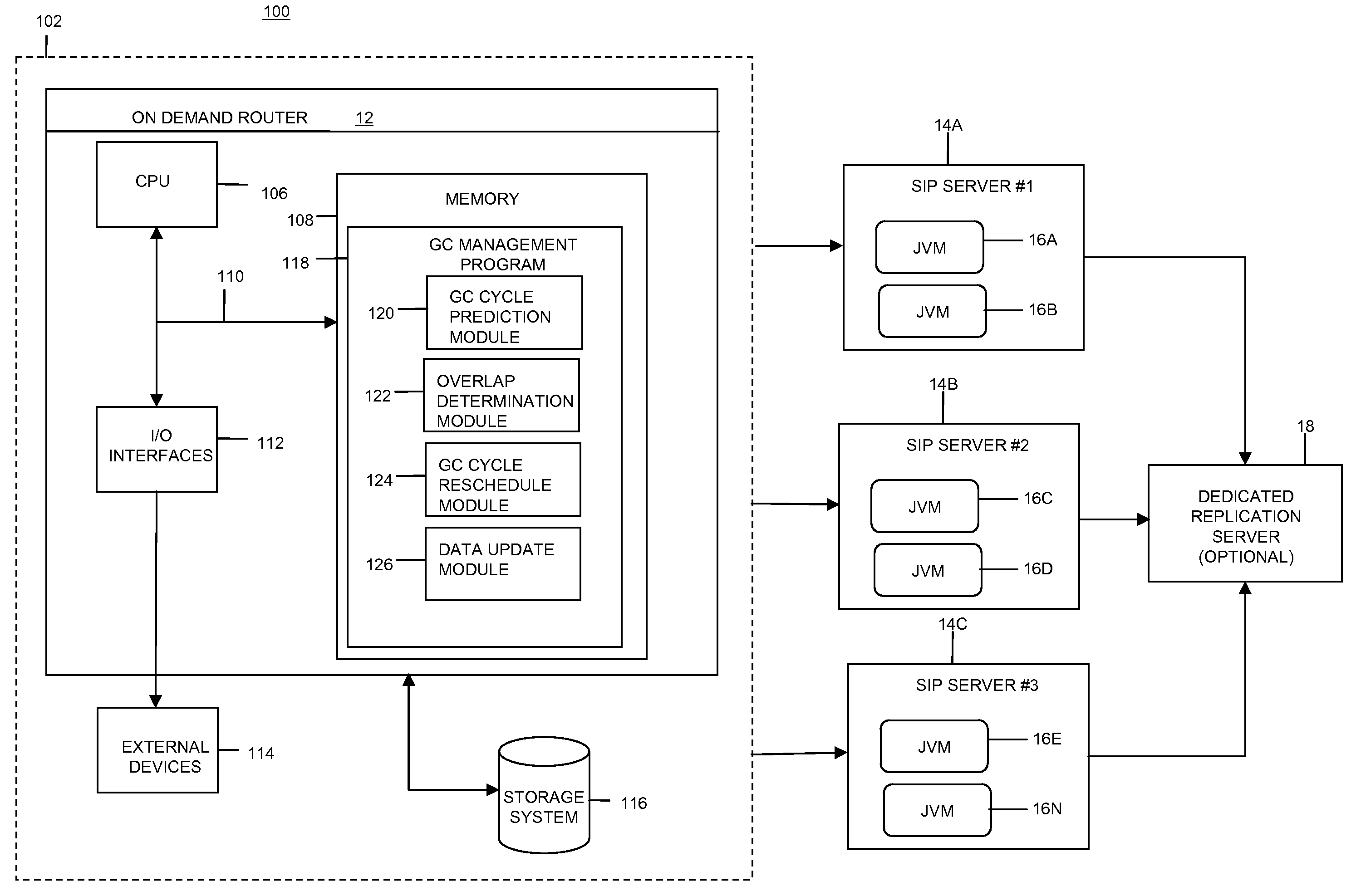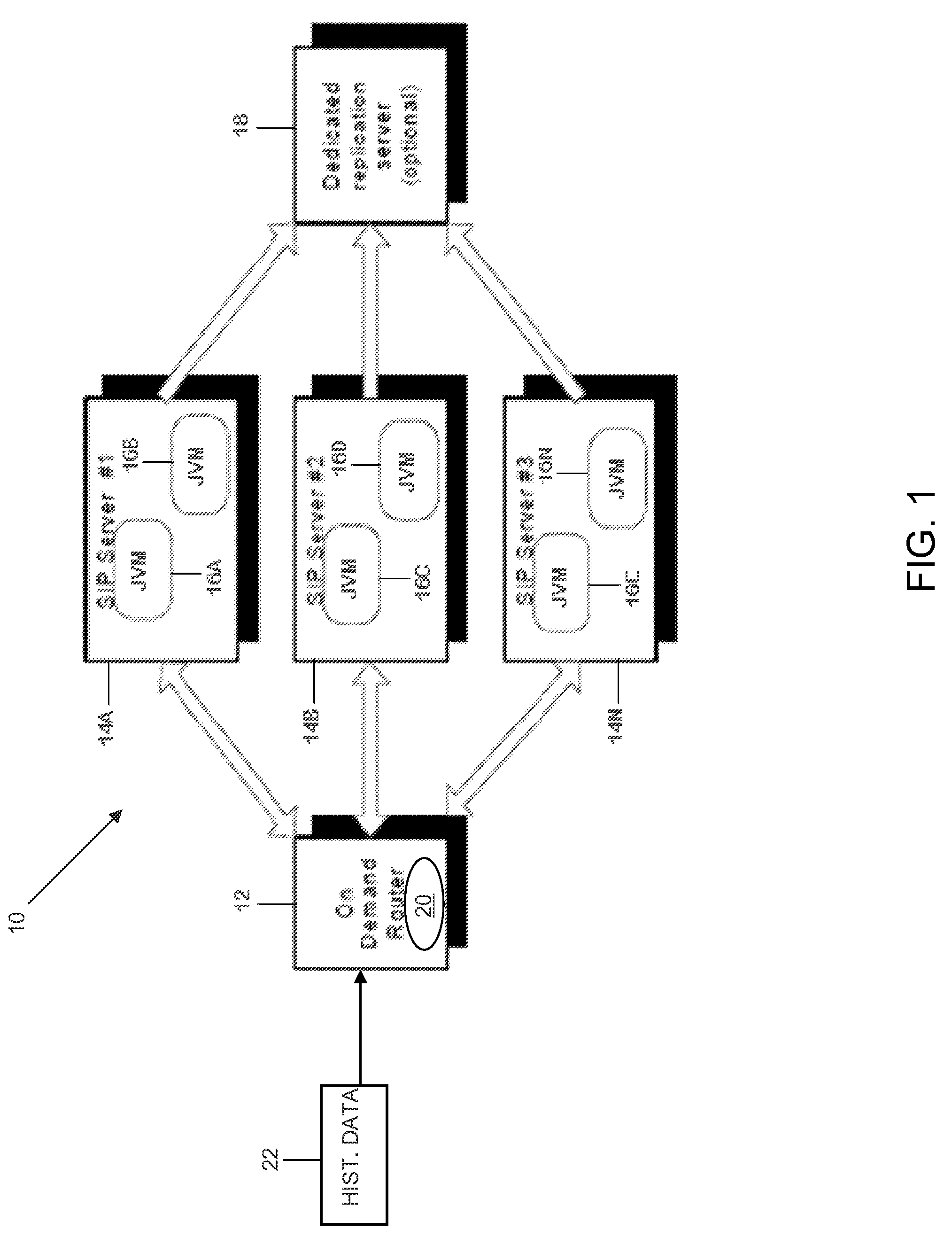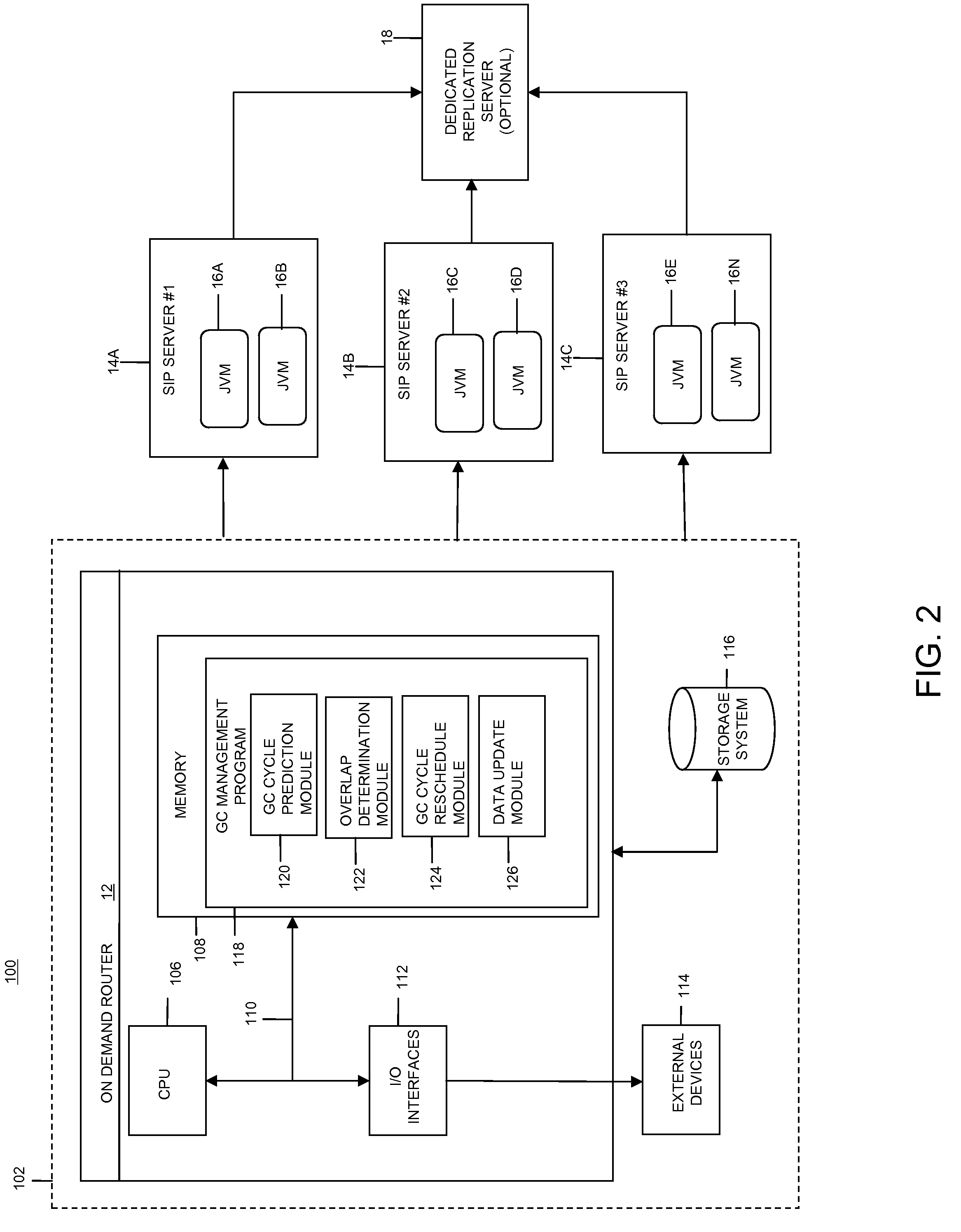Automatic memory management (AMM)
a memory management and automatic technology, applied in the field of automatic memory management (amm) coordination, can solve the problems of reducing efficiency, excessive message retransmission or sip call failure, and sensitive to message or request latency, so as to reduce or eliminate any overlap and maintain amm latency
- Summary
- Abstract
- Description
- Claims
- Application Information
AI Technical Summary
Benefits of technology
Problems solved by technology
Method used
Image
Examples
Embodiment Construction
[0019]For convenience, the Detailed Description of the Invention has the following sections:
[0020]I. Definitions
[0021]II. General Description
[0022]III. Computerized Implementation
I. Definitions
[0023]For the purposes of this disclosure, the following terms will have the associated definitions:
[0024]‘Node’ is intended to refer to any computing device (e.g., an SIP server) on which an AMM cycle / event could be executed (e.g., by a VM within an application server).
[0025]‘Next AMM Time’ is intended to refer to a time coordinate (day, time, etc.) at which an AMM cycle will commence on a node.
[0026]‘AMM Duration Time’ is intended to refer to a duration of time that a AMM cycle will be executing once commenced.
[0027]‘AMM Guard Time’ is intended to refer to a desired delay / buffer in time between execution of two or more AMM cycles occurring on a common node.
II. General Description
[0028]As indicated above, the present invention addresses the above-referenced issues by managing / coordinating the...
PUM
 Login to View More
Login to View More Abstract
Description
Claims
Application Information
 Login to View More
Login to View More - R&D
- Intellectual Property
- Life Sciences
- Materials
- Tech Scout
- Unparalleled Data Quality
- Higher Quality Content
- 60% Fewer Hallucinations
Browse by: Latest US Patents, China's latest patents, Technical Efficacy Thesaurus, Application Domain, Technology Topic, Popular Technical Reports.
© 2025 PatSnap. All rights reserved.Legal|Privacy policy|Modern Slavery Act Transparency Statement|Sitemap|About US| Contact US: help@patsnap.com



